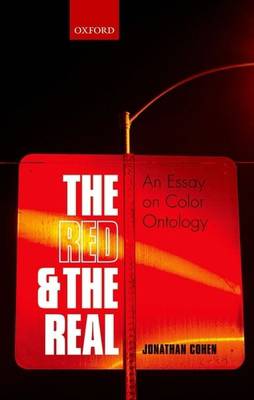
- Afhalen na 1 uur in een winkel met voorraad
- Gratis thuislevering in België vanaf € 30
- Ruim aanbod met 7 miljoen producten
- Afhalen na 1 uur in een winkel met voorraad
- Gratis thuislevering in België vanaf € 30
- Ruim aanbod met 7 miljoen producten
Zoeken
€ 56,95
+ 113 punten
Omschrijving
The Red and the Real offers a new approach to longstanding philosophical puzzles about what colors are and how they fit into the natural world. Jonathan Cohen argues for a role-functionalist treatment of color--a view according to which colors are identical to certain functional roles involving perceptual effects on subjects. Cohen first argues (on broadly empirical grounds) for the more general relationalist view that colors are constituted in terms of relations between objects, perceivers, and viewing conditions. He responds to semantic, ontological, and phenomenological objections against this thesis, and argues that relationalism offers the best hope of respecting both empirical results and ordinary belief about color. He then defends the more specific role functionalist-account by contending that the latter is the most plausible form of color relationalism.
Specificaties
Betrokkenen
- Auteur(s):
- Uitgeverij:
Inhoud
- Aantal bladzijden:
- 278
- Taal:
- Engels
Eigenschappen
- Productcode (EAN):
- 9780199692231
- Verschijningsdatum:
- 11/08/2011
- Uitvoering:
- Paperback
- Formaat:
- Trade paperback (VS)
- Afmetingen:
- 234 mm x 155 mm
- Gewicht:
- 482 g

Alleen bij Standaard Boekhandel
+ 113 punten op je klantenkaart van Standaard Boekhandel
Beoordelingen
We publiceren alleen reviews die voldoen aan de voorwaarden voor reviews. Bekijk onze voorwaarden voor reviews.











